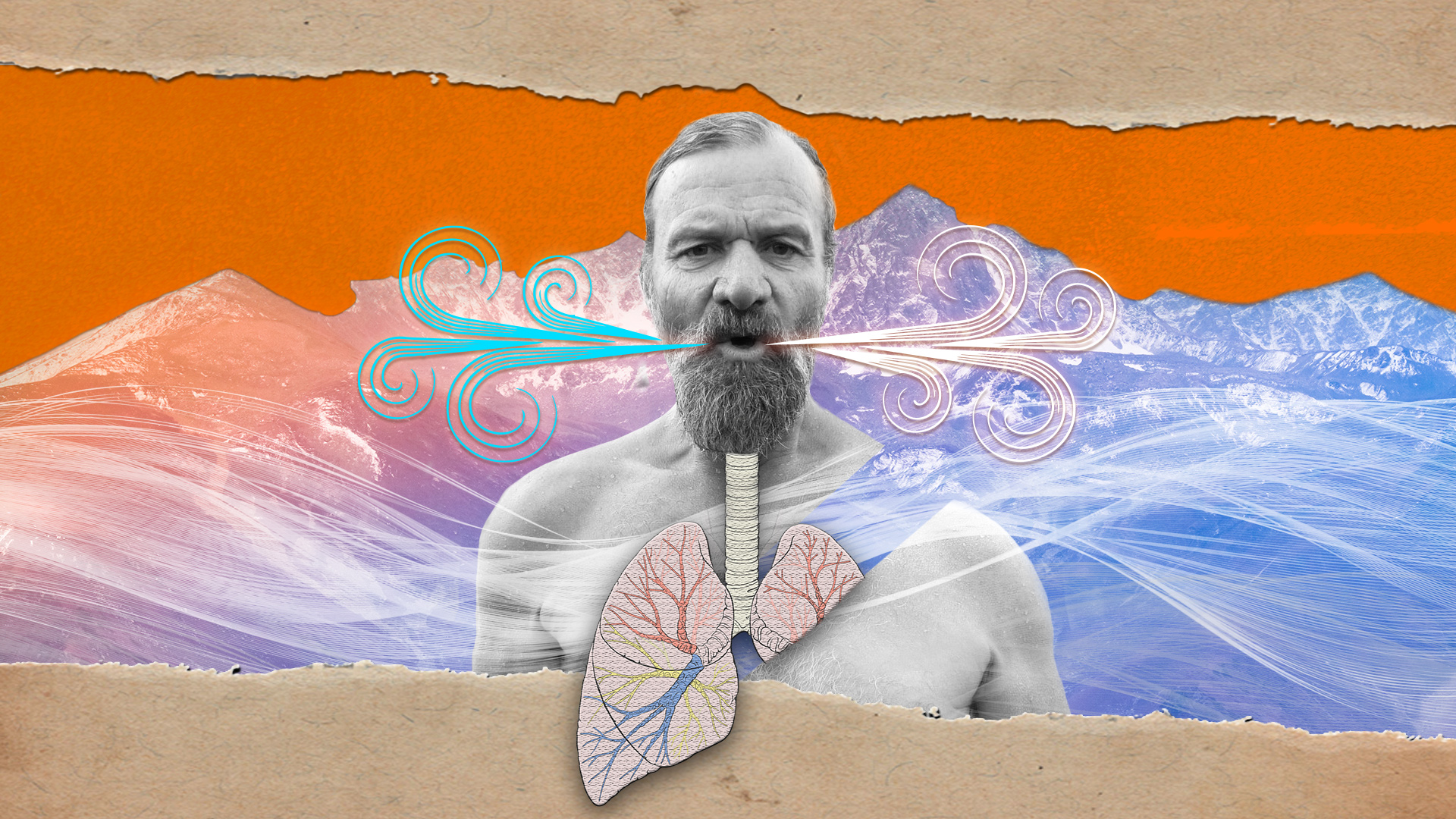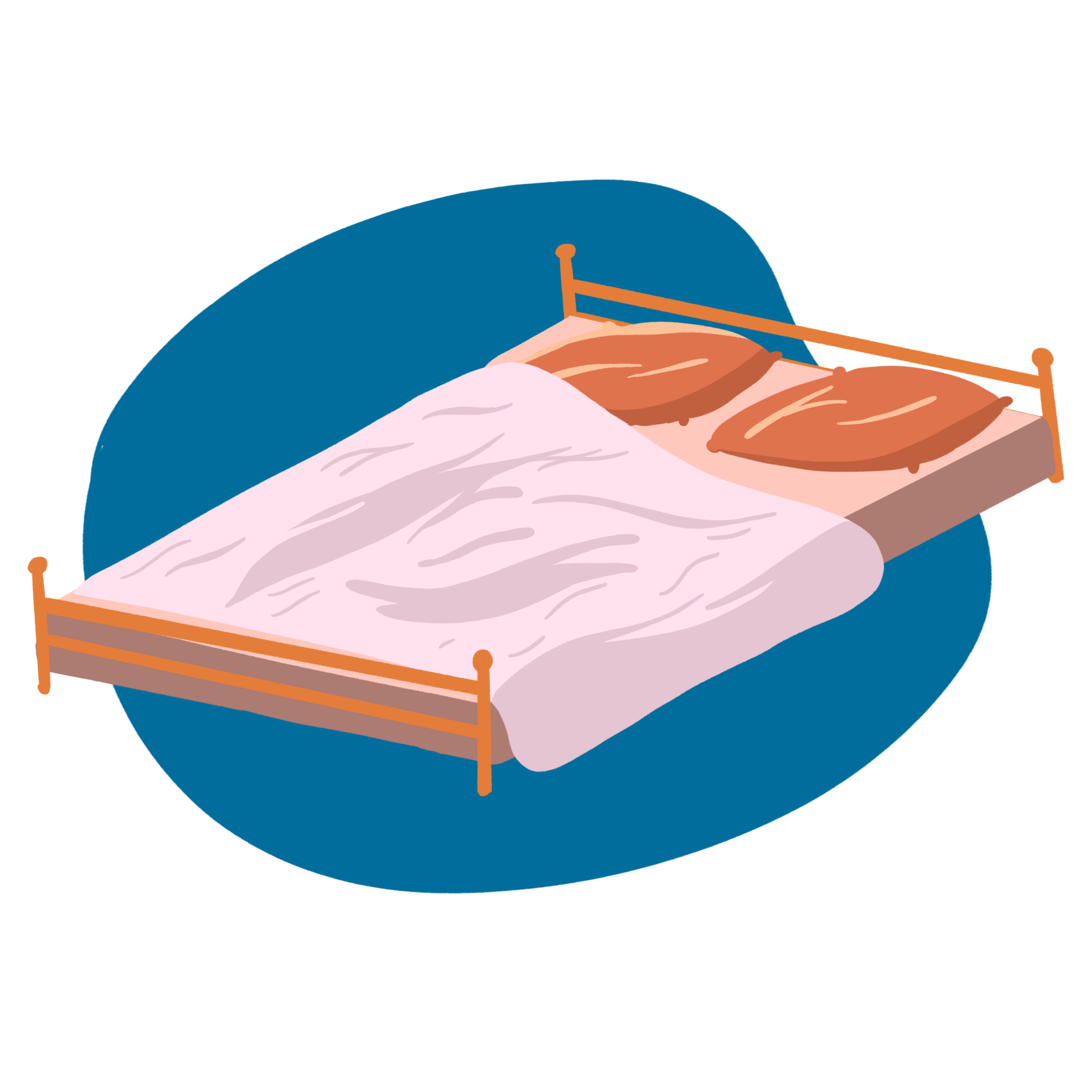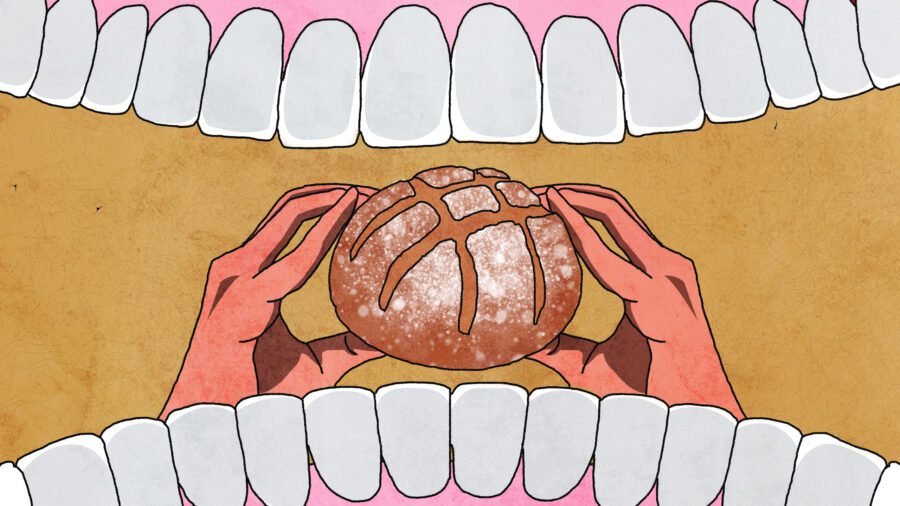
The Best Breathing Exercises to Improve Your Health, Sleep, and Mental State
In the past hundred years, the medical knowledge surrounding our physical, mental, and emotional health has skyrocketed.
Not only do we have experienced scientists, doctors, and medical professionals to provide valuable information, but we have extraordinary technology to improve our overall wellness — MRIs, nutritional supplements, antibiotics, ultrasounds, you name it!
While these advancements are life-changing, the real secret to taking control of our wellness begins with something as simple and mundane as our breath. Breathing is often perceived as nothing more than a means to keep us alive, but it can be something much greater. For centuries, breathing techniques have been used around the world to improve health, promote restful sleep, and address anxiety.
How can your breath have so much power? Isn’t it just oxygen passing in and out of your lungs? Well, yes, but it actually goes a lot deeper than that.
Breathing is a complex process that involves your diaphragm, chest muscles, and lungs working together to bring oxygen into the body. Breathing exercises involve consciously controlling oxygen intake for short periods of time. You can take short, rapid breaths, long, deep breaths, breathe through your nose, or breathe through your mouth — and each of these methods has different benefits.
In this article, we’ll dive deep into some of the best breathing techniques out there to improve your health, promote better sleep, and ease your mind when anxiety creeps in.
The Best Breathing Exercises for Healthy Living
Have you ever considered you might be breathing the wrong way?
According to James Nestor, author of Breath: The New Science of a Lost Art, 25% to 50% of people breathe through their mouths on a daily basis. Breathing through your mouth can actually cause several health problems, resulting in dry mouth, brain fog, even crooked teeth. On the other hand, breathing through your nose helps keep the nasal passages moisturized and warm, which is essential for protecting against bacteria and viruses. We also have better control over the amount of air we’re letting in, allowing our bodies to use the oxygen more effectively.
Breathing through the nose is just one simple example of how our breathing habits impact our overall health. Now, let’s dive into some specific breathing techniques you can use to improve your wellness.
What Is Alternate Nostril Breathing?
Now that we know breathing consistently through your nose is healthier, let’s take it a step further — alternate nostril breathing. This breathing method, in particular, can improve cardiovascular health, lower your blood pressure, and strengthen respiratory functions. Here’s how you do it!
#1: Sit in a comfortable environment with your legs crisscrossed, and close your eyes to limit possible distractions.
#2: Rest your left hand on the ground next to you. Exhale through your nose, then move your right hand up to your nose and gently close your right nostril with your right thumb.
#3: With your left nostril only, inhale fully. Then move your finger to your left nostril and close it. Now, exhale fully through your right nostril.
#4: Inhale through your right nostril fully and close it with your finger. Now exhale fully through your left nostril.
#5. Repeat this process at least three more rounds for maximum results!
What Is the Wim Hof Breathing Method?
Have you ever heard of Wim Hof, AKA the Iceman? He’s a world-famous athlete known for his ability to withstand extreme temperatures. He climbed up Mount Everest wearing only shorts and shoes in 1998, stayed submerged underwater for 62 minutes without oxygen at age 35 (breaking the record), ran a marathon above the Arctic Circle in Finland, and summited Kilimanjaro with no shirt or shelter from sun exposure.
As a modern-day “superhuman,” Wim Hof attributes much of his athletic achievements, cold tolerance, and wellness to the power of his breath. He has developed a breathing technique that anyone can do, which he calls the Wim Hof Breathing Technique (WHBT). Let’s break it down:
#1: Get in a comfortable position (seated or lying down).
#2: To block out any distractions, close your mind and clear your thoughts.
#3: Focus on your breath. Breathe in deeply through your nose and imagine the breath starting in your belly and then moving to your chest. Exhale freely through your mouth. Repeat this process 30-40 times.
#4: On the final breath, inhale deeply and then exhale it out. Hold your breath until you have to breathe again.
#5: For your first breath after the hold, inhale deeply through your nose and feel your belly and chest expand. Hold this breath for 15 seconds, and then let it go through your mouth.
What Is the Senobi Breathing Method?
This Japanese style of breathing has been shown in numerous studies to actually promote weight loss, and the best part is, it’s so simple!
#1. Stand in an open space with lots of room.
#2: Breathe in through your nose while stretching your arms overhead and leaning them back.
#3: Hold your breath in that position for a few seconds.
#4: As you exhale through your nose, lower your arms slowly back to their original position at your sides.
#5. Repeat this process for five minutes daily.By stretching your arms up and back, you give your lungs the room to fully expand, letting oxygen travel throughout your body effectively. Over time, Senobi breathing can increase hormone secretion and regulate the nervous system, leading to weight loss.
The Best Breathing Exercises for Better Sleep

But let’s be honest — sleep isn’t always restful. Some nights you may find yourself tossing and turning, thoughts racing through your head about work. Other nights, you can’t seem to fall asleep in the first place, and then there are those nights where you sleep but wake up feeling exhausted.
If we’re going to be sleeping for 26 years of our lives, we owe it to ourselves to get the best sleep possible. The secret to better sleep starts with breathing, and the great news is, it doesn’t cost you a dime. Here are the best breathing exercises to lull you into better sleep.
What Is the 4-7-8 Breathing Method?
The 4-7-8 breathing method was developed by Dr. Andrew Weil, a Harvard-educated physician who specializes in integrative medicine and holistic approaches to health. This breathing method calms the nervous system before bed so that your brain can slow down and you can doze off more easily. The 4-7-8 breathing method is simple in theory, but it takes practice to master. Here’s how you do it in just five steps:
#1: Rest your tongue comfortably behind your upper front teeth.
#2: Exhale your breath fully through your mouth with your lips pursed in a loose circle.
#3: Once out of breath, close your mouth and inhale through your nose, counting to 4 seconds.
#4: After inhaling, hold your breath for 7 full seconds.
#5: Slowly exhale your breath through your mouth for 8 seconds. Keep your lips pursed in a loose circle, and you’ll hear a soft whoosh sound.
As you’re getting ready to sleep, repeat this process until you start to feel your eyes getting heavy. When you hold your breath, your body is regaining oxygen and supplying it to your vital organs. At the same time, you’re mentally falling into a steady pattern, which calms down your nervous system and eases the mind.
Keep in mind that, as with any exercise, it takes time to master. You may not feel the effects of the 4-7-8 breathing exercise on your first try. Try visualizing yourself falling asleep as you take deep breaths in and out, and don’t forget to practice this exercise throughout the day to get the full benefits.
Join In 200 Million+ On The Journey to Greatness
What Is the Bhramari Pranayama Breathing Method?
The Indian phrase bhramari pranayama translates to “bee breath,” and that’s exactly what this breathing exercise sounds like.
#1: Sit in a comfortable position with your eyes closed, and gently press your fingers against your ears.
#2: Exhale completely, then inhale deeply through your nose. When you reach the peak of your inhalation, pinch your nostrils shut and hold your breath for a few seconds.
#3: Exhale through your nose, keeping your mouth closed shut. As you exhale, make a soft, consistent humming sound (which should sound like a bee buzzing).
The soft humming and controlled breath calm down your body’s nervous system before sleep. The Bhramari Pranayama breathing method also can reduce your blood pressure and slow your heart rate, making it a great breathing exercise to perform if you find yourself anxious.
What Is the Box Breathing Method?
Another breathing method to try before you go to sleep is box breathing (also called “four-square breathing). If you’re not familiar, here’s how it works:
#1: Sit in an upright position and breathe out all your breath in a long exhale. Push all the air out of your lungs — your chest should feel tight.
#2: Inhale through your nose slowly, counting to 4 seconds in your head. With each number, try filling your lungs with more and more air.
#3: Hold your breath for 4 seconds.
#4: Exhale through your mouth, pushing all the air out of your lungs, and repeat the whole process again. Box breathing can settle your nervous system down — as you hold your breath, your blood fills up with CO2. The buildup of CO2 stimulates your parasympathetic nervous system, making you feel relaxed and calm — the perfect state of mind to be in for sleep.
The Best Breathing Exercises to Calm Anxiety
Your heart is beating fast. Thoughts are running through your head at a hundred miles per hour, and your chest feels tight. In these moments of anxiety, we can feel completely out of control — out of control of our present circumstances and even not in control of our bodies. How do we take that first step back into peace and calm?
For some, the answer lies in controlled breath. When we can gain control over our breath, we show our bodies and minds that we are in control. You can use all of the breathing exercises mentioned so far to help calm anxiety, but let’s dive into three specific exercises that have a soothing effect on the nervous system.
What Is the Belly Breathing Method?
Let’s start with an easy one — belly breathing (also called diaphragmatic breathing). When we’re stressed, we often inhale and exhale quickly from our chest. These breaths are shallow and uncontrolled. Belly breathing is a simple way to regain control by exhaling and inhaling through the stomach.
#1: Find a quiet, safe space, and sit in a comfortable position.
#2: Place one hand on your stomach, just below the ribs, and the other on your chest.
#3: Inhale deeply through your nose. You should feel your stomach expand, pushing your other hand outward. Your chest should stay still.
#4: Purse your lips and exhale through your mouth. Use the hand on your stomach to “push” the air out.
#5: Repeat this exercise until you start to feel yourself settling down.
If you find yourself close to a panic attack, this is a great exercise to reset the nervous system and reground yourself.
What Is the Mindful Breathing Method?
When we’re anxious, we often have negative thoughts circling through our heads, creating patterns of distrust, fear, and even anger. Rather than trying to suppress or ignore these thoughts, it’s best to acknowledge them but replace them with positive mantras: I am worthy. I am capable. I am safe.
When you combine these affirmations with deep breathing, you get mindful breathing. Mindful breathing looks different for everyone, but here’s an example of how you could begin to apply it during an anxious state.
#1: Find a safe, quiet place and get in a comfortable position.
#2: Choose a “calming focus” — this can be a word, a sound, your breath, or even a memory.
#3: As you inhale and exhale deeply through your nose, speak or visualize the calming focus.
#4: If you find your mind starting to wander, bring yourself back to your focus by gently tapping on your leg or saying a word such as “focus” out loud to remind yourself of your goal.
Mindful breathing works best if you practice every day — not just when you’re feeling anxious. As you repeat positive mantras or reflect on soothing memories, you create neural pathways in your brain, overwriting negative thought patterns.
What Is the Lion’s Breath Method?
Lion’s Breath, also known as simhasana (lion’s pose), is a yogic breathing practice that can decrease anxiety and even improve cardiovascular health. If you have kids, this is a great exercise to teach them, as it involves imitating a roaring lion.
#1: Find a comfortable space with plenty of room to stretch out. Start in a seated position with your knees on the floor.
#2: Lean forward, placing your hands on the floor in front of you. Spread out your fingers wide.
#3: Inhale deeply through your nose and then hold your breath.
#4: Open your mouth and stick out your tongue, pointing it toward your chin.
#5: Exhale strongly through your open mouth, making a “ha” sound that comes from within your stomach.
#6. Close your mouth and breathe deeply in and out your nose for a few minutes.
#7: Repeat the lion’s breath exercise again as many times as you wish.
Sticking out your tongue and roaring like a lion may seem odd, but these movements stretch the muscles in your face and release built-up stress.
How Often Should You Use Deep Relaxing Breathing Techniques?
We’ve covered nine total breathing exercises in this article, but this is truly just scratching the surface of all the breathing methods out there. As always, speak with your healthcare professional if you have specific questions regarding which breathing exercises are right for you.
If you’re ready to start incorporating these breathing techniques into your routine, here’s what we recommend for frequency.
- If you want to improve your overall health (cardiovascular, respiratory, weight, etc.), aim to do a breathing exercise in the morning and in the evening.
- If you want to improve your sleep, aim to do these exercises at least once a day before bed.
- If you want to reduce stress or anxiety, try incorporating some of these techniques into your daily routine a few times a week.
The most important takeaway from this is that if you want to see real change in your overall wellness, you have to make breathing techniques a habit — not just a phase. Real change is only sustained by habitual choices. The great news is that it’s never too late to start prioritizing your health, sleep, and mental state — you can achieve greatness, one breath at a time.
Greatness Authors
Greatness Authors is a collection of writers, thinkers, curiosity experts, and students of the world who are committed to bringing you the most up-to-date, impactful, and inspiring information surrounding Greatness topics.

Do You Have to Be a Morning Person to Be Successful? Here’s What Both Sides Have to Say

9 Reasons You’re Tired All the Time & How to 10x Your Energy

How to Have a Healthy Romantic Relationship Even if You Share Different Beliefs

The 7 Best Vitamins to Naturally Promote Better, Uninterrupted Sleep According to Shawn Stevenson

The Science of Forming Healthy Habits & Letting Go of Bad Ones, According to Author James Clear











